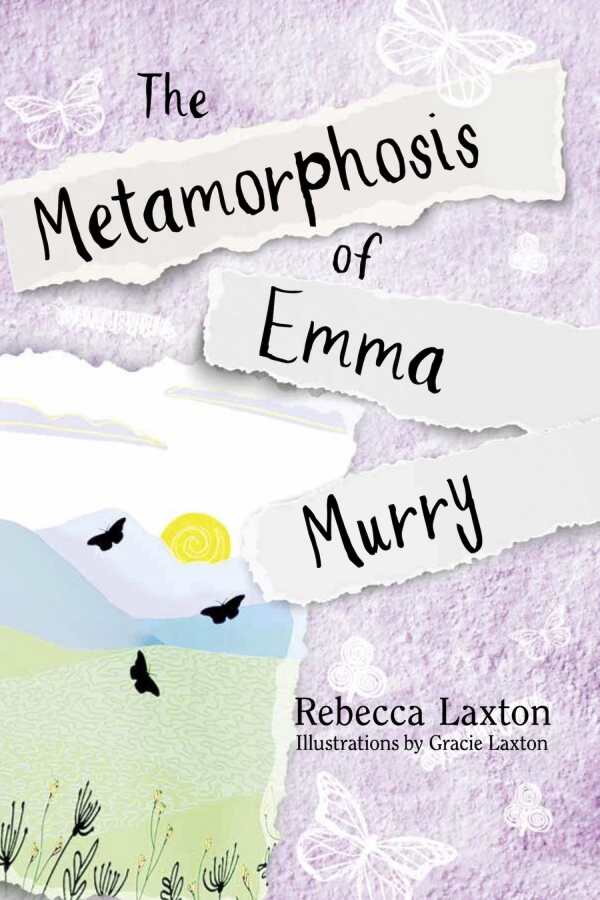The Metamorphosis of Emma Murry
The Metamorphosis of Emma Murry is a dazzling novel about a girl’s crusade to save a local mountain—and perhaps fall in love.
In Rebecca Laxton’s delightful novel The Metamorphosis of Emma Murry, an artistic thirteen-year-old strives to save her beloved mountain from degradation while grappling with relationships and the supernatural.
Emma lives in Black Mountain, North Carolina, where she and her best friend, Sophie, are members of their middle school’s environmental club. One of their projects is tending a butterfly garden on Paul’s Peak—part of a wider effort to save the endangered monarch butterfly. They love their town:
We … took it all in—singing birds, whooshing trees, sunlight changing the color of the flowers as it danced across them. We could see the whole spectrum, each color from its brightest to deepest hue. It was a paradise.
One summer day, while traipsing past an abandoned farm on their way to plant flowers with their neighbor, Mr. Zauber, they hear a wolf howl. Sophie determines that it is a red wolf—an animal on the verge of extinction. Then Emma sees what appears to be a ghost in an upper window of a dilapidated barn. While they are pondering the significance of these events, Mr. Zauber informs them that someone (later revealed to be a Black Mountain-raised, well-known actor with an Instagram-famous skateboarder son) is buying Paul’s Peak to turn it into a ski resort, which will destroy the butterfly garden.
Though other Black Mountain residents are dazzled by the celebrities in their midst and excited at the prospect of tourist dollars, the girls devise a plan to halt the sale. But when the actor’s thirteen-year-old son, Jeb, admires Emma’s hand-painted skateboard, his attentions complicate the girls’ allegiances: Emma develops a crush on Jeb, finding him to be “a lot cuter in person than on his Instagram.” She connects with him on social media, via text, and while skateboarding; this puts a strain on her friendship with Sophie. However, while the girls can’t agree about Jeb, they both want to protect Paul’s Peak and the butterfly garden.
Emma is a wide-eyed heroine prone to exclaiming “Wowza!” whose love for wildlife bleeds into her expressions: “The ache in my stomach turned into a butterfly and flitted around.” But as much as it is about her everyday concerns and involvement in protecting the mountain, the novel’s forward movement is directed most by the environmental club’s activism. Its members brainstorm solutions including scaring off the prospective buyers with stories about local ghosts and about a mysterious creature, the Toggle Road Beast. Their more practical activities include making and distributing flyers and launching a protest at a zoning meeting. They become exemplars of taking part in civic affairs. And in addition to these activist themes, the novel celebrates diversity via supporting characters including Spanish-speaking Cami and her brother Carlos; Stella, who started the Black Mountain Museum of the Cherokee; and Evelyn, a Black dancer.
References to regional products, including soda and ice cream, mix with a blend of folklore and facts to establish a sense of local color. Still, while the book’s descriptions of the natural world are bright, education is often the primary focus. There’s information on the life cycle of butterflies and the potential damages of economic development embedded in this inspiring tale about fighting for what you believe in.
In the fun young activists’ novel The Metamorphosis of Emma Murry, a spirited girl blends her environmental activism with a dash of excitement over a visiting celebrity.
Reviewed by
Suzanne Kamata
Disclosure: This article is not an endorsement, but a review. The publisher of this book provided free copies of the book and paid a small fee to have their book reviewed by a professional reviewer. Foreword Reviews and Clarion Reviews make no guarantee that the publisher will receive a positive review. Foreword Magazine, Inc. is disclosing this in accordance with the Federal Trade Commission’s 16 CFR, Part 255.

